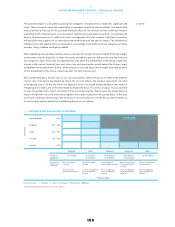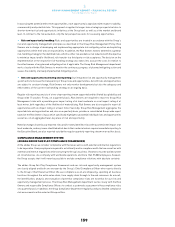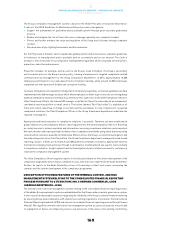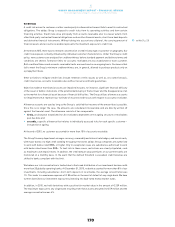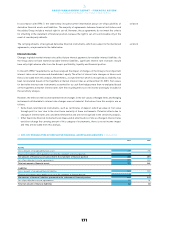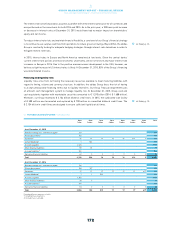Reebok 2015 Annual Report Download - page 171
Download and view the complete annual report
Please find page 171 of the 2015 Reebok annual report below. You can navigate through the pages in the report by either clicking on the pages listed below, or by using the keyword search tool below to find specific information within the annual report.
167
3
GROUP MANAGEMENT REPORT – FINANCIAL REVIEW
Risk and Opportunity Report – Illustration of Material Risks
Similarly, underestimating demand can lead to product shortfalls at the point of sale. In this situation,
the Group faces the risk of missed sales opportunities and/or customer and consumer disappointment,
which could lead to a reduction in brand loyalty and hurt our reputation as an On-Time In-Full supplier. In
addition, the Group faces potential profitability impacts from additional costs such as airfreight in efforts
to speed up replenishment.
In order to mitigate these risks, we actively manage inventory levels, for example by continuous monitoring
of stock levels as well as centralising stock holding and clearance activities. We also continuously strive
to improve our forecasting and material planning processes. Our integrated business planning process
ensures alignment of demand and supply planning on a monthly basis and thus facilitates inventory and
order book management. In addition, our Global Operations function is continuously improving the agility
and flexibility of our planning environment in order to shorten order-to-delivery times and ensure availability
of products while trying to avoid excess inventories.
LEGAL & COMPLIANCE RISKS
Risks related to customs and tax regulations
Numerous laws and regulations regarding customs and taxes affect the adidas Group’s business practices
worldwide. Non-compliance with regulations concerning product imports (including calculation of customs
values), intercompany transactions or income taxes could lead to substantial financial penalties and
additional costs as well as negative media coverage and therefore reputational damage, for example in
case of understatements or underpayments of corporate income taxes or customs duties.
To proactively manage such risks, we constantly seek expert advice from specialised law or tax advisory
firms. We closely monitor changes in legislation in order to properly adopt regulatory requirements
regarding customs and taxes. In addition, our internal legal, customs or tax departments advise our
operational management teams to ensure appropriate and compliant business practices. Furthermore, we
work closely with customs authorities and governments worldwide to make sure we adhere to customs and
import regulations and obtain the required clearance of products to fulfil sales demand. In order to reduce
the financial risk, we also create provisions in our financial statements in accordance with the relevant
accounting regulations to account for potential disputes with customs or tax authorities.
FINANCIAL RISKS
Currency risks
Currency risks for the adidas Group are a direct result of multi-currency cash flows within the Group.
Furthermore, translation impacts from the conversion of non-euro-denominated results into our Group’s
functional currency, the euro, might lead to a material negative impact on our Group’s financial performance.
The biggest single driver behind this risk results from the mismatch of the currencies required for sourcing
our products versus the denominations of our sales. The vast majority of our sourcing expenses are in US
dollars, while sales are denominated in other currencies to a large extent – most notably the euro. Our main
exposures are presented in the table. The exposure from firm commitments and forecasted transactions
was calculated on a one-year basis.
see Internal Group Management
System, p. 102
see Global Operations, p. 74
see Table 04



